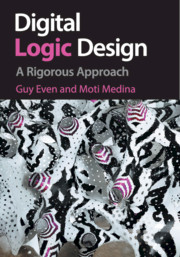21 - The ISA of a Simplified DLX
from PART IV - A SIMPLIFIED DLX
Published online by Cambridge University Press: 05 November 2012
Summary
In this chapter we describe a specification of a simple microprocessor called the simplified DLX. The specification of the microprocessor is done by an instruction set architecture (ISA). The ISA is a simple programming language, called machine language, that defines manipulations of data as well as control of the program.
The simplified DLX is a stored-program computer. This term means that both the data and the instructions are stored in the same memory. In 1945, John von Neumann proposed how to build such a computer. This proposal was influenced by the concept of a universal Turing machine. Modern computers are based on the same principles but include many techniques for speeding up the execution of programs. These techniques include cache memories, pipelining, running instructions in parallel and even out of order, predicting branches, and so on. These topics are discussed in books on computer architecture.
WHY USE ABSTRACTIONS?
The term architecture, according to the Collins Dictionary, means the art of planning, designing, and constructing buildings. Computer architecture refers to computers instead of buildings. Computers are rather complicated; even a very simple microprocessor is built from tens of thousands of gates and an operating system spans thousands of lines of instructions. To simplify things, people focus at a given time on certain aspects of computers and ignore other aspects. For example, the hardware designer ignores questions such as which programs will be executed by the computer.
- Type
- Chapter
- Information
- Digital Logic DesignA Rigorous Approach, pp. 309 - 322Publisher: Cambridge University PressPrint publication year: 2012

